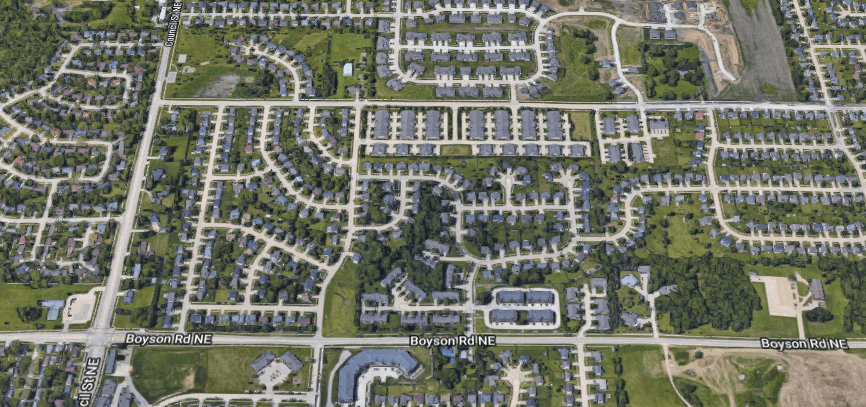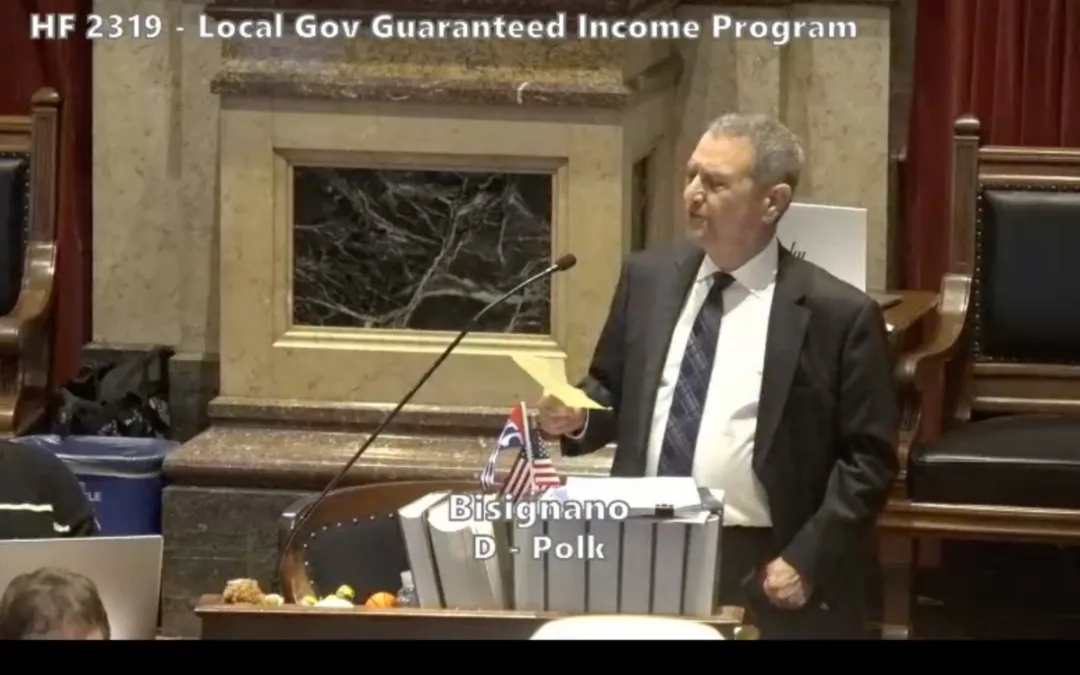
For the second in our series of in-depth looks at where the key Iowa House battlegrounds stand for November, we turn to suburban districts in the eastern part of the state. Iowa has seen similar trends to other parts of the country where suburban voters, who are typically college-educated and have higher incomes, are moving toward Democrats.
The problem for Iowa Democrats, of course, is that we don’t have that many suburban areas in the state. The party will have to capture as many of these seats that are trending their way as possible to make up for the rural districts that have gotten more difficult under the Donald Trump era.
Eastern Iowa Suburbs: 4 Pick-Up Opportunities
For all the same reasons that Democrats look good in the Des Moines suburbs, their chances for flipping seats in the Cedar Rapids, Quad Cities and Cedar Falls metro areas are high. Things may be a little tougher here, however, as the Cedar Rapids and Quad Cities media markets aren’t as hyper-aware of legislative politics as the Des Moines market is. And these contests may come down much more to the individual candidate match-ups, though Democrats still have much better odds here than in previous years thanks to Trump.
HD 68 (Open Seat) – Molly Donahue (D) vs Randy Ray (R)
Location: Marion
2016 Presidential: 48% Clinton, 44% Trump
2012 Presidential: 54% Obama, 44% Romney
Registration: 7,032 Dem, 6,182 GOP, 8,163 Ind
Registered Ds Primary Change: +332
Fundraising
Donahue: $9,332
Ray: $1,023

This is Democrats’ other likely pick-up district, along with Jennifer Konfrst’s HD 43. Molly Donahue, a teacher, ran against Ken Rizer in 2016, but Rizer opted against reelection and moved out of the district (as well as leaving the Republican Party over Trump). She got 44% of the vote that time, but faces an easier path to victory this time in an open seat.
A former teacher and coach, Randy Ray should have had a good profile to run on in this suburban swing seat, but his campaign has been lackluster at best. He’s also from Bertram, not the biggest population center in the district. Having barely $1,000 cash-on-hand will quickly get you dropped from the party’s target list. And Republicans know they’re likely to lose some seats; they just need to avoid a wipe-out in order to hold on to their majority. Don’t be surprised if they cut their losses in a district like this in order to protect vulnerable incumbents.
By the same token, Donahue’s fundraising is much too low for a top pick-up seat, but given the odd circumstances, she may not need it. She was already introduced to voters in her first run and should benefit from this district moving closer to its 2012 presidential result than the 2016 one.
HD 67 – Rep. Ashley Hinson (R) vs Eric Gjerde
Location: Hiawatha, Marion, Robins, Cedar Rapids
2016 Presidential: 47% Clinton, 46% Trump
2012 Presidential: 50% Romney, 49% Obama
Registration: 6,500 Dem, 7,202 GOP, 8,066 Ind
Registered Ds Primary Change: +321
Fundraising
Hinson: $64,731 COH
Gjerde: $43,328 COH

This may be the best, most-competitive matchup in the state. It’s also exactly the kind of tough race that Democrats need to win to capture the majority. It won’t be easy as Ashley Hinson, a former TV news anchor, is very well-known and well-liked in the Cedar Rapids metro. She was quickly given high-profile roles in the House running important Republican bills by leadership. But in exchange, she also voted for a number of far-right bills, betraying the more moderate image she ran on in her first race.
Chief among those was the 6-week abortion ban, which would have made Iowa the most restrictive state in the country for women’s reproductive rights. Hinson passed herself off as a moderate on those issues, telling a local crowd in 2016 that she herself used Planned Parenthood healthcare services. Now she’s tossed herself in with the most conservative wing of the party in a swing district with many independent-leaning female voters.
Eric Gjerde, a special education teacher and volunteer sheriff’s reserve deputy, brings a good profile to the race and has put together a strong campaign operation. He’s also one of Democrats’ best fundraisers this cycle, only to be matched and then some by Hinson. Unlike several other Republican incumbents, she’s risen to the challenge of defending a must-hold swing seat.
Expect a very expensive race here as both parties fully engage to win over voters in this very swingy district.
HD 60 – Rep. Walt Rogers (R) vs Dave Willams (D)
Location: Cedar Falls, Waterloo
2016 Presidential: 49% Trump, 45% Clinton
2012 Presidential: 50% Obama, 49% Romney
Registration: 6,529 Dem, 7,003 GOP, 7,571 IND
Registered Ds Primary Change: +270
Fundraising
Rogers: $41,157 COH
Williams: $19,056 COH

This race has gone under the radar for most of the year, but could end up as one of the last seats Democrats need to flip the House. An on-paper swing seat, Democrats have had high hopes for years for knocking off Walt Rogers, a conservative House member that has led the effort on a school voucher system. But Rogers’ closest reelection in this seat was back in 2012 when he won by three points.
Democrats’ nominee Dave Williams certainly seems like the type of candidate who can win over this wealthier suburban district. Williams is a former operations manager at John Deere who’s well-connected in the local community with his volunteer work. He also runs in some of the same circles that Rogers does; in fact, he’s Rogers’ neighbor.
Aside from the congressional race, there’s not many other state races that are really competitive here, so both parties can focus their volunteer efforts in on HD 60. Rogers holds the fundraising advantage here and should be able to raise plenty more and get party support if he feels especially at risk this year.
HD 94 – Rep. Gary Mohr (R) vs Joan Marttila (D)
Location: Bettendorf
2016 Presidential: 50% Trump, 44% Clinton
2012 Presidential: 54% Romney, 45% Obama
Registration: 6,248 Dem, 8,668 GOP, 9,671 IND
Registered Ds Primary Change: +310
Fundraising
Mohr: $29,115 COH
Marttila: $13,595 COH

Bettendorf is trending toward Democrats, but this part of it may still be too Republican to overcome just yet. Like the Waukee district, the presidential gap narrowed significantly here for Democrats. Unlike HD 44, there’s still an incumbent Republican to deal with here.
If you’re outside of the Quad Cities and had to Google who Gary Mohr is, you’re not alone. The first-term state representative is a former alderman who has worked in college administration. He ran unopposed in the 2016 general election.
This time he faces Joan Marttila, a retired educator. She’s raised just enough to get out basic communications to voters, though Mohr still leads her. There’s also a state senate race in Bettendorf, so Democratic volunteers are active out here this cycle in turning out their base.
The biggest problem here is the same for other races in the area: the Quad Cities media market is split between Iowa and Illinois news, meaning voters here don’t get as much coverage of happenings at the Iowa Statehouse. Outrage over collective bargaining, Planned Parenthood, Medicaid and more is a little muted compared to the Des Moines area. The one exception is education funding, where neighboring Davenport schools have waged a one-district war against funding cuts. That may yet play a big role in this upper-income district, especially since it was the key issue Mohr ran on in 2016.
Democrats can probably reach a majority without HD 94, but if the suburbs break hard for the party while blue-collar and rural districts don’t snap back from their Republican trends, this may yet be a crucial seat for Democrats to flip.
Eastern Iowa Suburbs Prospects
Achieving a full sweep of the competitive suburban districts outside of Des Moines will be much harder. If they do, it’s likely that Democrats get above the 51 seats they need. But they’ll still need to grab two to three wins in this area to put together their majority.
HD 68 ought to be a victory, unless Republicans dump a ton of money into the race to save it. Democrats have strong contenders in the other races, but they’ll need some help from national trends to get past the finish line. The increases in Democratic registrations since the primary in these districts are in the 200s and 300s, unlike the 400s to 600s in Des Moines.
Both Mohr and Hinson are first-term incumbents, making it easier for Democrats to make the case that their ideologies are not as initially advertised after racking up a far-right voting record as soon as they got into office. Rogers, who has survived tough races before, will require a very aggressive approach. Fortunately in all of these districts, Trump’s deep unpopularity should drag down the Republican ticket.
by Pat Rynard
Posted 9/5/18
Politics

Biden marks Earth Day by announcing $7 billion in solar grants
The Biden administration on Monday announced the recipients of its Solar For All Program, a $7 billion climate program that aims to lower energy...

6 terrifying things that could happen if the Comstock Act is used to target abortion
Does 1873 sound like a really, really long time ago? Well, that’s because it is—but if Republicans and far-right anti-abortion activists have their...
Local News

No more Kum & Go? New owner Maverik of Utah retiring famous brand
Will Kum & Go have come and gone by next year? One new report claims that's the plan by the store's new owners. The Iowa-based convenience store...

Here’s a recap of the biggest headlines Iowa celebs made In 2023
For these famous Iowans, 2023 was a year of controversy, career highlights, and full-circle moments. Here’s how 2023 went for the following Iowans:...






